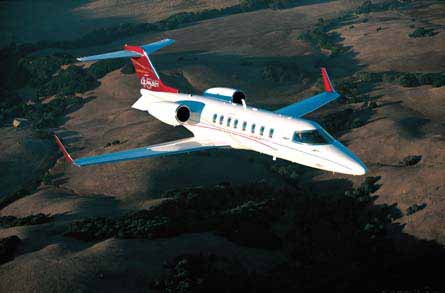Carrier targets cash-rich domestic companies as it acquires helicopters and Learjets
As India's economy boomed, the country's commercial aviation market followed. Now Deccan Aviation, arguably the company that started the ball rolling by founding low-cost pioneer Air Deccan three years ago, is gearing up revolutionise the country's executive charter market.
"The economic boom led to the creation of a huge middle class, who are the target of commercial airlines. But it has also led to the emergence of companies that want the benefits of business jets for their top executives, and rich individuals who want the ease and comfort of charter flights," says managing director Capt Gopinath.
His company is set to take delivery of Eurocopter Ecureuil AS355 and Bell 230 helicopters by year-end, and two Bombardier Learjet 45XR business jets in the first quarter of 2007. It has also signed a letter of intent to buy another 10 Learjets, and plans to add up to four helicopters every year.
|
|---|
Deccan Aviation will take delivery of two new Learjet 45XRs in early 2007, and plans to add 10 in the future |
Since starting in 1997, the company has become India's largest private charter company with a fleet of nine helicopters and two fixed-wing aircraft that operate from its main base in Bangalore and seven other locations.
The growing number of cash-rich, domestic companies and the increasing presence of multinationals provide the biggest impetus for business aviation, says Gopinath.
"The consumer boom creates more companies. Their top executives are pressed for time, and business jets will go a long way towards helping them," he adds. "This market is growing slower than the commercial aviation market, but demand is picking up and we expect it to do well in the coming years."
Helicopter charters, Deccan Aviation's core business, remain at the fore. "Helicopters are a very good mode of transport for acountry without much infrastructure and a lot of inaccessible places," says Gopinath.
The company faces challenges - finding and retaining pilots at a time of high demand for trained personnel, overcoming a cumbersome bureaucracy that is still slowly adjusting to the aviation boom, and getting around a famously poor infrastructure.
"We are also trying to get the government to change archaic regulations, some of which date back to the 1930s, like forbidding aerial photography. To be fair, the authorities are certainly more interactive now. We are trying to convince them to change rules, just as we did when we were starting up Air Deccan.
"Infrastructure is the biggest challenge and that takes time. There are 400 to 450 airports in India, but many are unmanned and do not have navigational facilities, while others are open only for a few hours a day. These things change gradually."
Source: Flight International
























